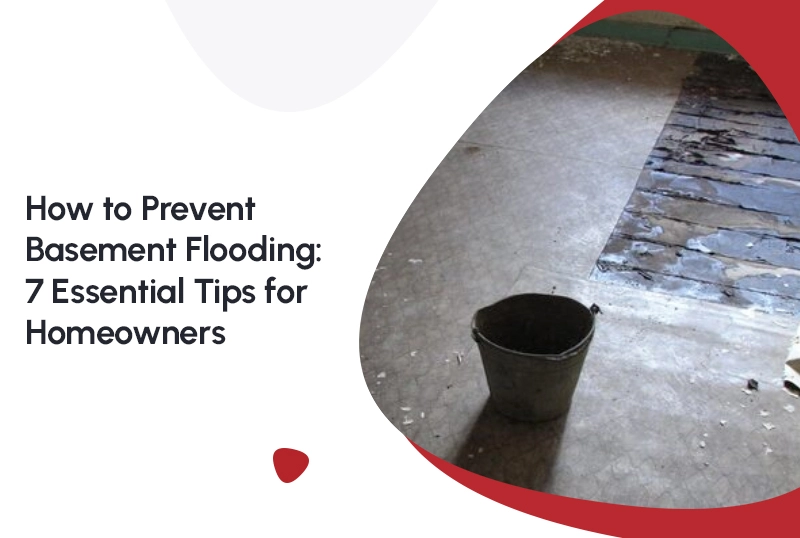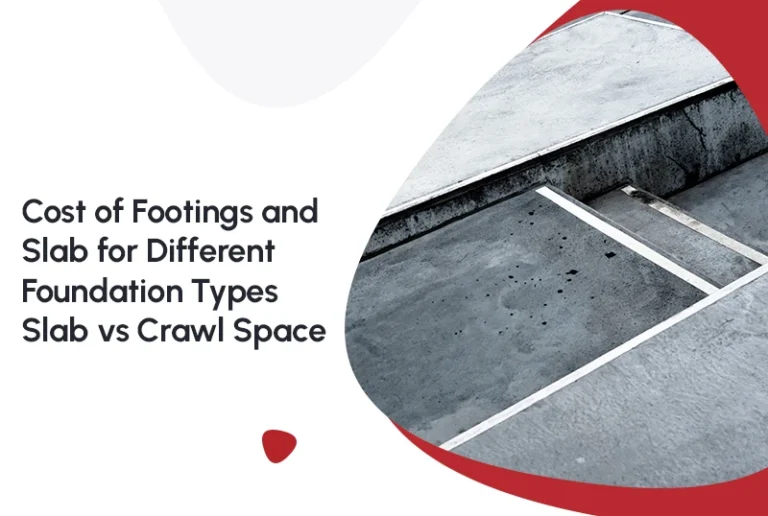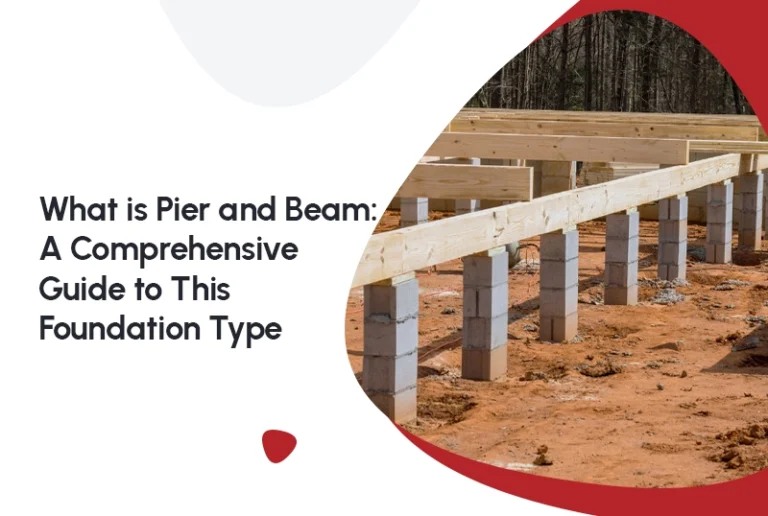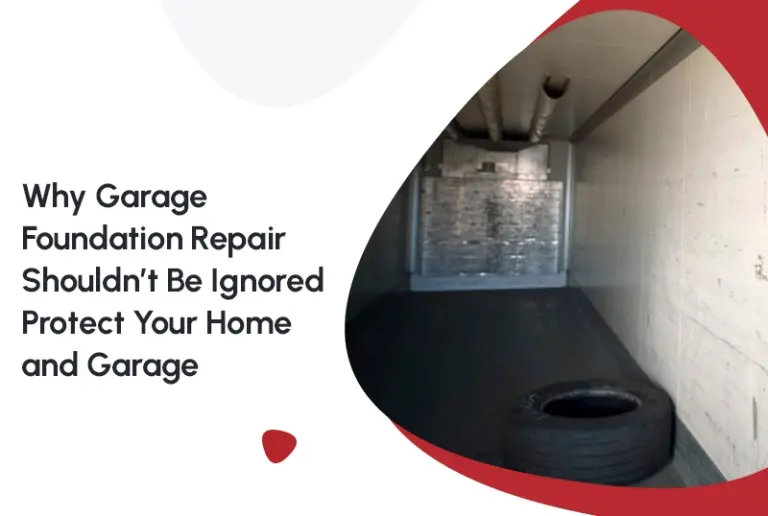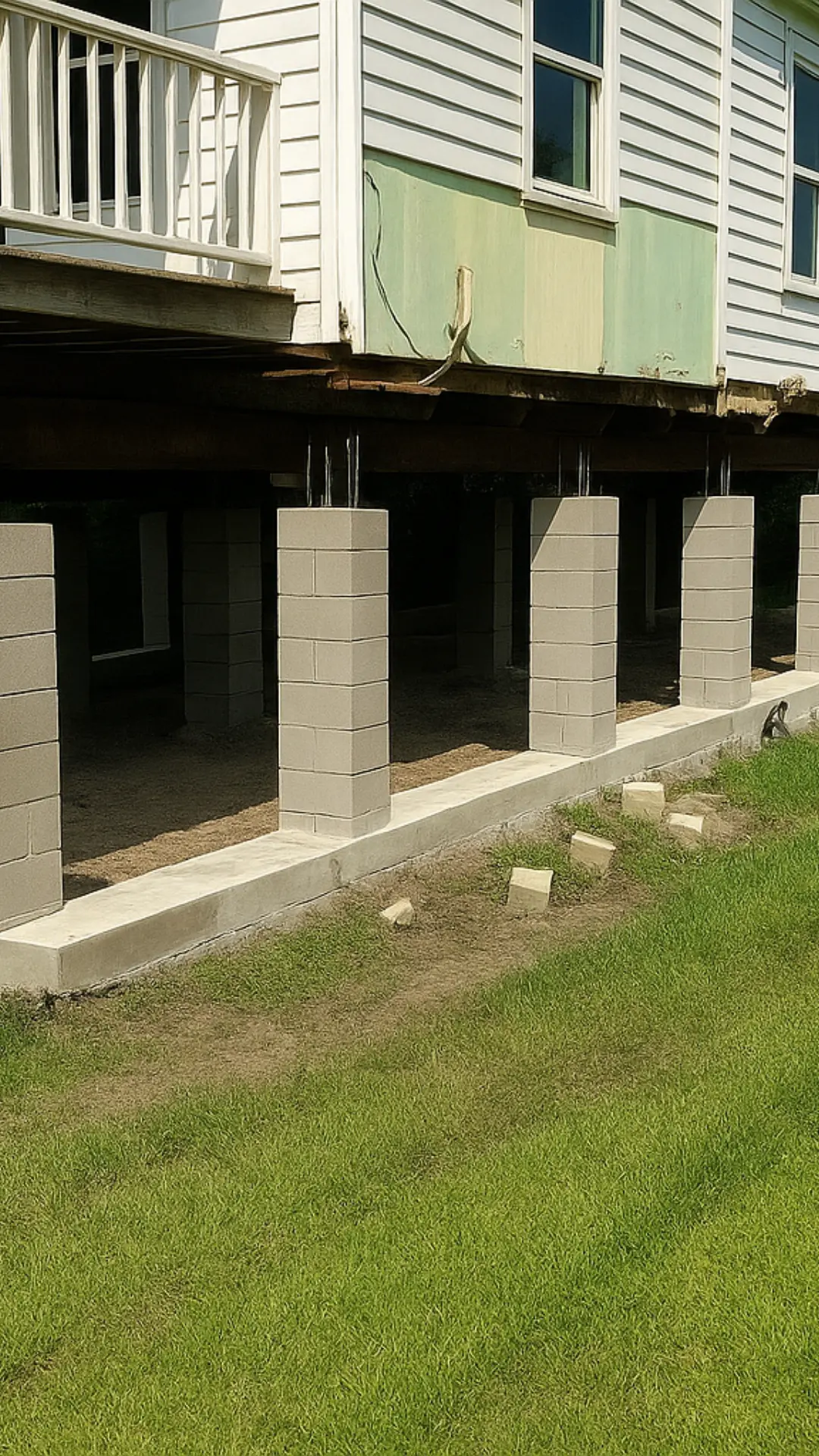Basement flooding is one of the most common and costly problems homeowners face. With unpredictable weather, aging infrastructure, and poor drainage systems, a wet basement can cause extensive damage to your property, belongings, and even your health. In fact, according to the National Flood Insurance Program (NFIP), over 14,000 claims are filed each year due to basement flooding. The damage caused can range from structural deterioration to mold growth, which can be hazardous to your health. Preventing basement flooding is not just a matter of maintaining the aesthetics of your home but safeguarding its overall structural integrity.
In this blog, we’ll discuss seven essential tips that can help you prevent basement flooding. Whether it’s seasonal rains, snowmelt, or poor drainage, these practical measures will go a long way in ensuring that your basement remains dry and safe.
1. Ensure Proper Grading Around Your Foundation
One of the primary causes of basement flooding is poor drainage. When the ground around your home slopes inward, water flows toward your foundation, increasing the risk of flooding. Proper grading is essential to ensure that rainwater flows away from your house.
Tip:
If your foundation slopes toward your home, water will likely pool around the basement walls and seep through cracks. The solution is simple: adjust the grading. Make sure that the ground around the house slopes at least 6 inches for every 10 feet away from the foundation. This slight incline will direct water away from your home, preventing it from accumulating at the base of the walls. Achieving this slope is a relatively straightforward process, but it’s important to get it right to avoid future flooding issues.
Fact:
According to the Insurance Information Institute, improper grading contributes to 25% of basement flooding incidents, making it one of the most significant factors in water intrusion.
2. Install and Maintain a Sump Pump
A sump pump is a device installed in the lowest part of your basement to pump out excess water. Sump pumps are incredibly effective at keeping your basement dry, especially during heavy rain or snowmelt.
Tip:
Choose a high-quality sump pump designed for your basement’s size and flooding potential. It’s crucial to keep the pump well-maintained to ensure it works when you need it most. Regularly test your sump pump, and if you live in a flood-prone area, consider
Fact:
The National Association of Home Builders (NAHB) suggests that 70% of homeowners with sump pumps report significantly lower instances of flooding and water damage.
3. Clean and Maintain Gutters and Downspouts
Clogged gutters and downspouts can cause water to overflow and pool around your foundation. Regular cleaning of your gutters ensures that rainwater is diverted away from the house rather than allowing it to accumulate against the walls.
Tip:
Proper gutter maintenance is essential to prevent water damage around your foundation:
Consider Gutter Guards: Install guards to reduce debris buildup and cleaning frequency.
Clean Gutters Twice a Year: Remove debris in spring and fall to prevent clogs and overflow.
Ensure Downspouts Direct Water Away: Make sure water flows at least 6 feet from your foundation. Install extensions if necessary.
Check for Blockages: Ensure water flows freely; clear any clogs promptly.
Maintain Proper Gutter Slope: Ensure a slight slope toward the downspout for proper drainage.
Fact:
According to the American Society of Home Inspectors (ASHI), improper maintenance of gutters and downspouts contributes to over 40% of basement flooding incidents.
4. Seal Basement Windows and Walls
Basement windows are often a significant entry point for water, especially during heavy rain. Over time, foundation walls may also develop cracks, providing a direct path for water to enter your basement.
Tip:
Inspect your basement windows and walls for cracks or gaps, especially after heavy rainfall. Apply waterproof sealant to prevent water from seeping in. For windows, consider installing waterproof window wells to redirect water away from the foundation.
Fact:
The NFIP reports that cracks in basement walls and windows are responsible for 20% of all basement flooding cases.
5. Landscape for Proper Drainage
Landscape grading and proper plant selection can also play a significant role in preventing basement flooding. Plants and trees planted too close to the house can direct water toward the foundation.
Tip:
Create a landscape that encourages water to flow away from the house by using techniques such as French drains or installing gravel around the perimeter. Additionally, avoid planting shrubs or trees too close to your foundation as their roots can block drainage systems.
Example:
A homeowner in Seattle was able to reduce their basement flooding risk by installing a French drain system in their backyard. This system helps capture rainwater and direct it to a nearby storm drain, preventing pooling near the foundation.
Fact:
Research by the American Society of Landscape Architects (ASLA) suggests that correct landscaping and grading reduce basement flooding risks by up to 60%.
6. Inspect and Repair Foundation Cracks
Foundation cracks, no matter how small, can allow water to seep into your basement. These cracks can occur due to soil movement, settling, or weather-related stress on the foundation.
Tip:
Regularly inspect your foundation for visible cracks. The best time to do this is after heavy rainfall, as the water may reveal any areas where moisture is entering your basement. If you find any cracks, get them sealed promptly. This will prevent water from infiltrating and reduce the likelihood of more extensive damage.
Cracks that are less than 1/8 inch wide can typically be sealed with hydraulic cement or polyurethane sealant. These materials work well to fill in small gaps and prevent water from seeping through. However, if the cracks are larger than 1/8 inch, it is highly recommended to hire a professional foundation repair contractor. Larger cracks can indicate a deeper issue with your home’s foundation that needs expert attention, such as settling or shifting of the structure.
Example:
A homeowner in New Jersey experienced flooding after a small crack in their foundation allowed water to seep into the basement. After sealing the crack with hydraulic cement, they reported no further flooding during heavy rains.
Fact:
The Foundation Repair Association estimates that 80% of basements with cracks in the foundation experience water intrusion during heavy rains.
7. Invest in a Water-Resistant Basement Floor
Even with all the preventative measures, basement flooding can sometimes still occur, especially in areas with high water tables. In these situations, a water-resistant basement floor can be a game-changer.
Tip:
Consider installing epoxy flooring or vinyl tiles, both of which are resistant to water and mold. These types of flooring are ideal for basements because they don’t absorb water, which significantly reduces the risk of permanent damage when flooding occurs. Unlike traditional flooring options like carpet or wood, which can warp or rot when exposed to moisture, epoxy and vinyl provide durable, easy-to-maintain surfaces that can withstand the humidity and moisture levels typically found in basements.
Fact:
The U.S. Environmental Protection Agency (EPA) recommends water-resistant materials for basements to help mitigate the effects of moisture. Homes with these materials tend to experience less long-term damage from floods.
Conclusion
Preventing basement flooding is crucial for protecting your home’s foundation, belongings, and your health. By following these 7 essential tips—grading the soil around your home, installing a sump pump, maintaining gutters and downspouts, sealing windows and cracks, landscaping properly, inspecting your foundation, and investing in water-resistant flooring—you can significantly reduce the chances of your basement flooding.
Remember, taking these preventive steps will save you money in the long run and protect your home from costly repairs. For homeowners who want to ensure their basement remains dry, consider contacting a professional for an inspection to identify any specific vulnerabilities.
FAQs About Basement Flooding Prevention
1. What is the most common cause of basement flooding?
The most common causes of basement flooding include poor grading around the foundation, clogged gutters, and foundation cracks. Additionally, inadequate or malfunctioning sump pumps contribute significantly to water intrusion in basements. Proper maintenance and preventive measures can mitigate these risks.
2. How do I know if my basement is at risk for flooding?
If you experience moisture after heavy rains, or if you live in an area with a high water table or frequent flooding, your basement may be at risk. It’s advisable to consult a professional inspector who can evaluate your basement’s susceptibility to flooding. Also, consider installing water sensors that alert you to rising moisture levels.
3. How can I prevent mold and moisture in my basement?
Prevent mold by keeping moisture levels low. This can be achieved by installing sump pumps, maintaining gutter systems, and using waterproof sealants. The EPA offers helpful advice on moisture control and mold prevention, such as ventilating basements and sealing cracks in windows and walls.
4. How often should I check my sump pump?
It’s important to test your sump pump every three months, and more frequently after heavy rains or storms. Make sure it’s working properly and is clear of debris. Additionally, consider installing a battery backup to ensure the pump works even during power outages.
5. Can landscaping help with flooding prevention?
Yes! Landscaping plays a significant role in directing water away from the foundation. Techniques such as installing French drains, using gravel around the perimeter, and ensuring proper sloping of the land can all help prevent water from pooling near your basement.
6. What are the best materials for basement flooring to prevent damage from floods?
Consider epoxy or vinyl flooring as they are water-resistant and easy to maintain. These materials do not absorb water, which reduces the likelihood of mold growth and water damage in the event of flooding.
7. How do I seal cracks in my foundation?
For small cracks, you can use hydraulic cement or polyurethane sealant. For larger foundation cracks, it’s recommended to call in a professional to ensure the repair is done correctly. Cracks should be sealed promptly to prevent water from entering your basement during heavy rainfall.
8. What’s the cost of basement waterproofing?
Basement waterproofing costs can vary, but typically range from $2,000 to $12,000, depending on the size of your basement, the type of waterproofing system needed, and the severity of the flooding risk. Consult a professional for an accurate estimate and to discuss the best options for your home.
9. Is it necessary to have a backup sump pump?
Yes, especially if you live in a flood-prone area or in regions that experience power outages during storms. A battery backup sump pump ensures that your basement remains protected even when the power goes out.
10. What should I do if my basement floods?
If your basement floods, the first step is to shut off the electricity to avoid electrical hazards. Once it’s safe, remove excess water using a pump or wet vac, and remove damaged items. Inspect for mold and start the drying process immediately. Consider professional restoration if the flooding is extensive.
